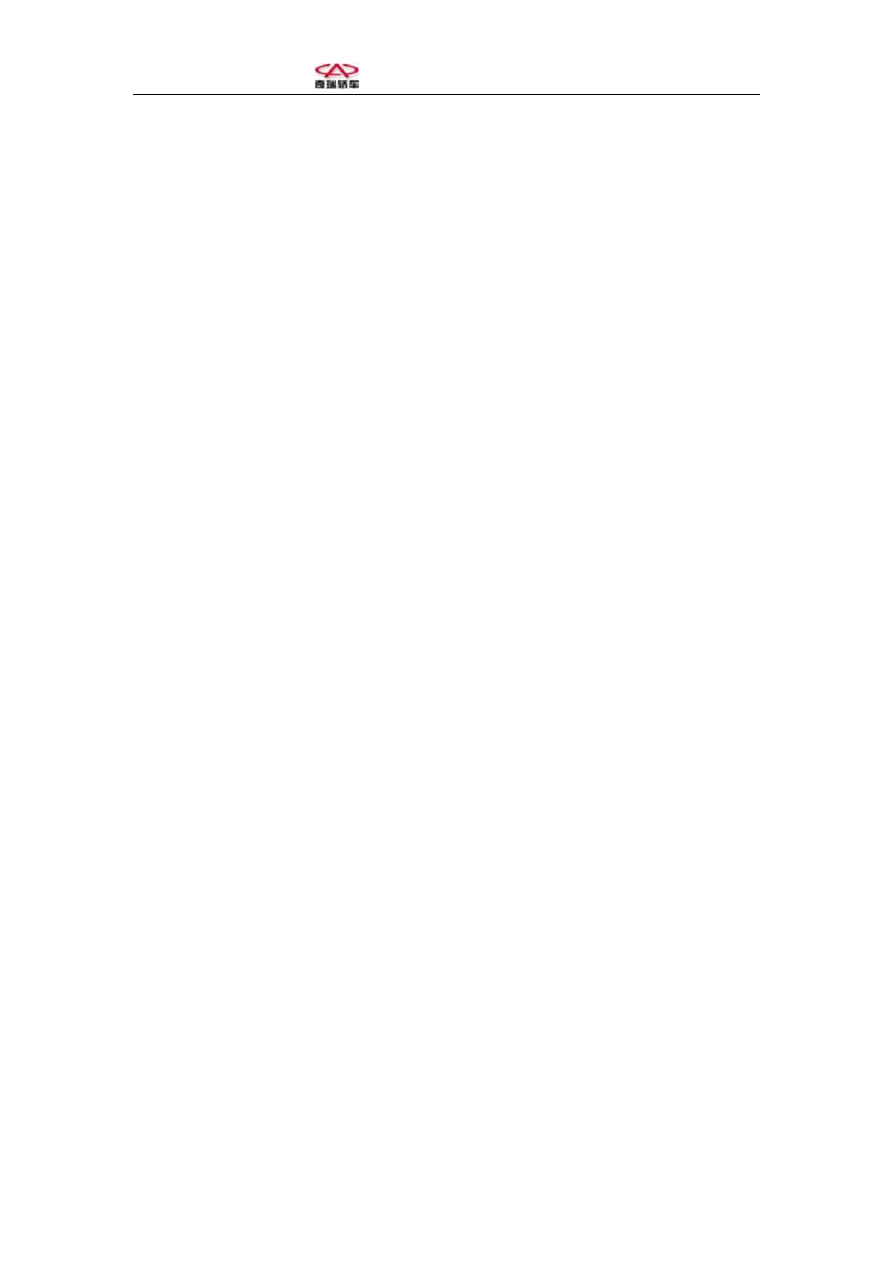Chery A15. Manual - part 215

attached on each side of each wheel. Avoid heavy impact on weights during
assembling, and replace the heavily impacted weights. Replaced weights are not
reusable.
(5). When installing wheel and tire assembly, first fix wheel bolts on wheel hub and
pretighten with hand, then tighten them with a special tool in a diagonal process,
tightening torque 110±10N.m. Impact wrench is not allowed to avoid overtightness
or undertightness. Lubrication of wheel bolts is prohibited. (For newly installed wheel
and tire assembly, tighten wheel bolts after the first 100km to ensure fastening torque.
Wheel bolt tightening torque inspection is one of daily maintenance items.)
(6). Tighten the set nuts in a diagonal process with the similar tightening torque,
which shall allow the free rotation of wheels. Wheels shall be placed on the ground
when finally tightening the nuts.
(7). Fix or place decorating cover as required. Lock decorating cover shall be fixed by
tapping with hands or knocking with a rubber tool.
II. Common Tire Faults
1. Proper Use of Tires
Tires are important components of wheel assemblies. Attention shall be paid to
following items:
(1). One vehicle shall be equipped with tires of the same model made by the same
manufacturer.
(2). Tires of other unspecified models are not allowed.
(3). All tires shall bear the same worn condition. To compensate and relieve the
uneven wear among tires, they shall be interchanged periodically in addition to
routine inspection and calibration of wheel alignment parameters. Interchange scheme
is shown in the figure. Specific interchange shceme may be adopted according to
actual wear condition. Recommended interchange mileage is 5000-8000km
2. Common Tire Faults and Diagnosis
(1). Lopsided wear